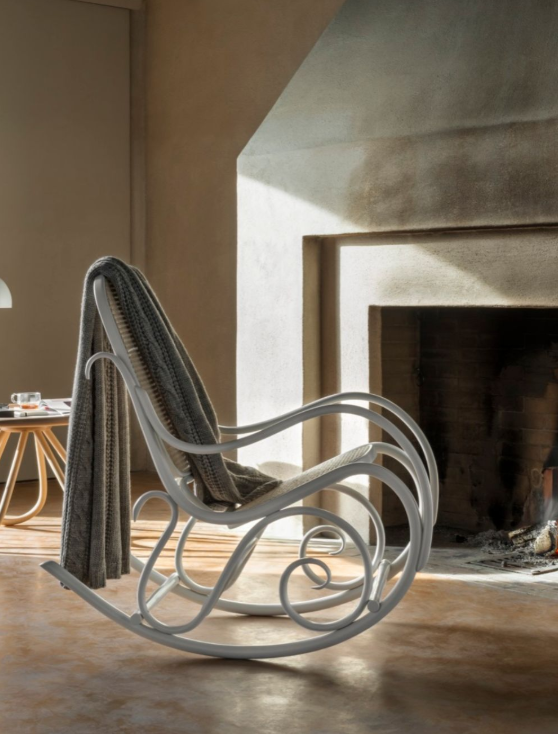Heritage designs the future. Schaukelstuhl.
In the journey back in time to discover our heritage, there has to be a chapter dedicated to the Schaukelstuhl, the rocking chair par excellence.
An elegant exercise in style that is defined by the curls created by the curves of the structure in solid steam-bent beech, to support the seat and seat back in woven cane.
An object with a unique charm, a genuine timeless icon, the rocking chair – model N. 22 – was created in 1885 and was an immediate success.
One of its characteristics is the volute of the side made of a single bent wood piece, in a single session. No joint, no overlapping of the ribs, no closure with screws, glue or joints in forming the volute. A unique curl put in place simply with eight screws. A significant saving in processing time and costs, which contributed to its success.
As Legno Curvato also told us, Michael Thonet chose to present the Schaukelstuhl as a chair for the home, for every home, a piece that every family could use and experience in everyday life. There was also a scaled-down version for children, as posters of the time demonstrate.
Comforting, the Schaukelstuhl was also chosen to enrich relaxation areas and winter gardens of elegant hotels.
An iconic piece loved by famous people. First of all Picasso, who had two of them in his atelier. The artist had a very strong connection with the Schaukelstuhl, and it appeared so often in his works that it was called the Picasso’s rocking chair.
Other creatives have been won over by its eternal charm, choosing it for their homes: from architects such as Ernesto Nathan Rogers and Achille Castiglioni, to the writer Italo Calvino and the stylist Han Feng.
The rocking chair is still today one of the most loved pieces of the historic GTV collection. Available in natural and stained beech and in black and white lacquer.
Discover here Schaukelstuhl!
To be continued.





